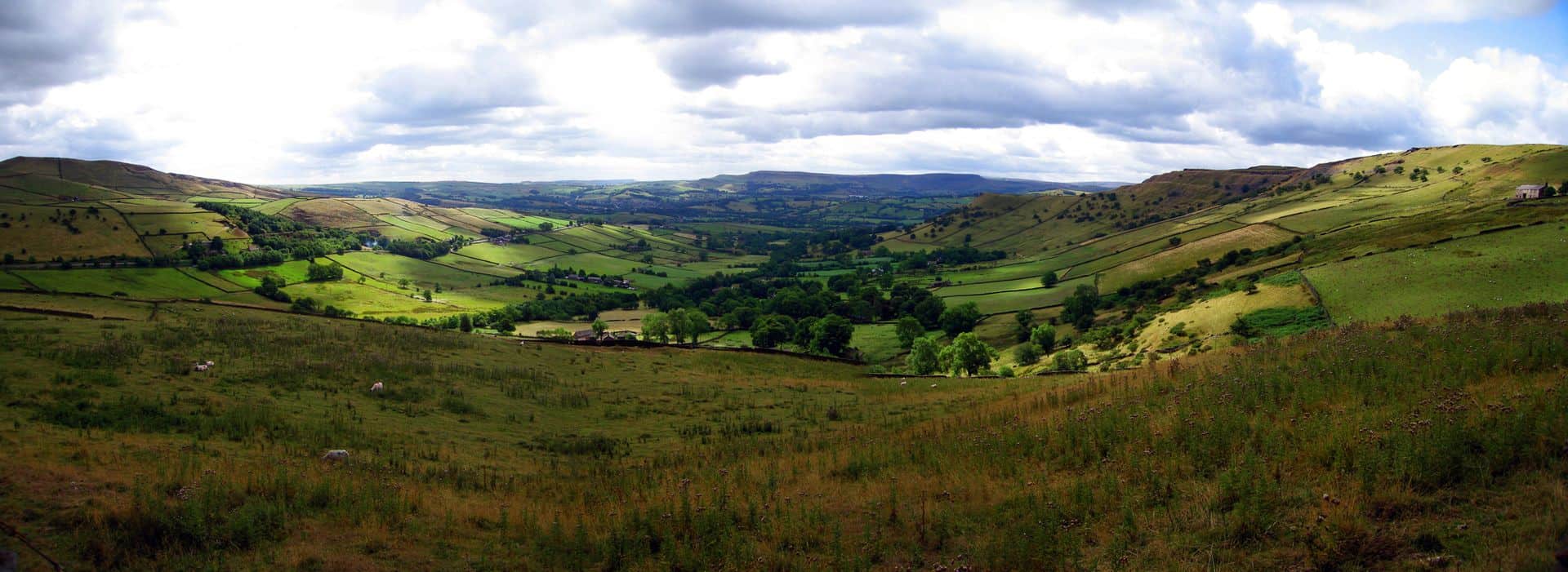Are you ready for an adventure of a lifetime? Let’s delve into the best places for wild camping in the Peak District and explore the absolute best wild camping locations it has to offer.
Immerse yourself in the untamed allure of the UK’s oldest national park: the Peak District. Nestled strategically between the bustling cities of Sheffield and Manchester, the park radiates unparalleled beauty, boasting craggy peaks, lush valleys, and expansive wild moorlands. But the true magic of this central England gem is best experienced by going off the beaten path by wild camping in the Peak District.
Imagine breaking free from the constraints of everyday life, pitching a wild camping tent in the remotest corners of this awe-inspiring landscape, and sleeping under a blanket of shimmering stars. Let the songs of nature be your lullaby and the first light of dawn your alarm clock. From rocky plateaus to rolling hills, there’s no better way to intimately acquaint yourself with the region’s rich tapestry of natural wonders than wild camping.
Is Wild Camping Legal in the Peak District?
Wild camping in the Peak District is technically illegal. You are technically breaking the law if you camp overnight in this region without obtaining permission from the landowner first. Unfortunately, most of the land in the National Park is privately owned.
However, whilst in principle you need the landowner’s approval, in reality, if you leave no trace, stay discrete, and quit your camping spot early, you will be fine. Wild camping in the Peak District is popular and is tolerated for the most part. But, get familiar with the Leave No Trace principles before heading to this region to wild camp, and you will have no trouble.
Map of Wild Camping Areas in the Peak District
You can easily find the locations of the wild camping areas and campsites in the state using this map.
Best Wild Camping Spots in the Peak District
Burbage Valley
For those who can’t reach the Peak District, wild camping in Norfolk offers a fantastic alternative. With its expanses of tranquil waterways, vast sandy beaches, and unique biodiversity, Norfolk provides a different but equally captivating landscape. Indeed, the beautiful Broadland waterscapes or the mystique of Thetford Forest can give Burbage Valley a run for its money.
Reynards Cave
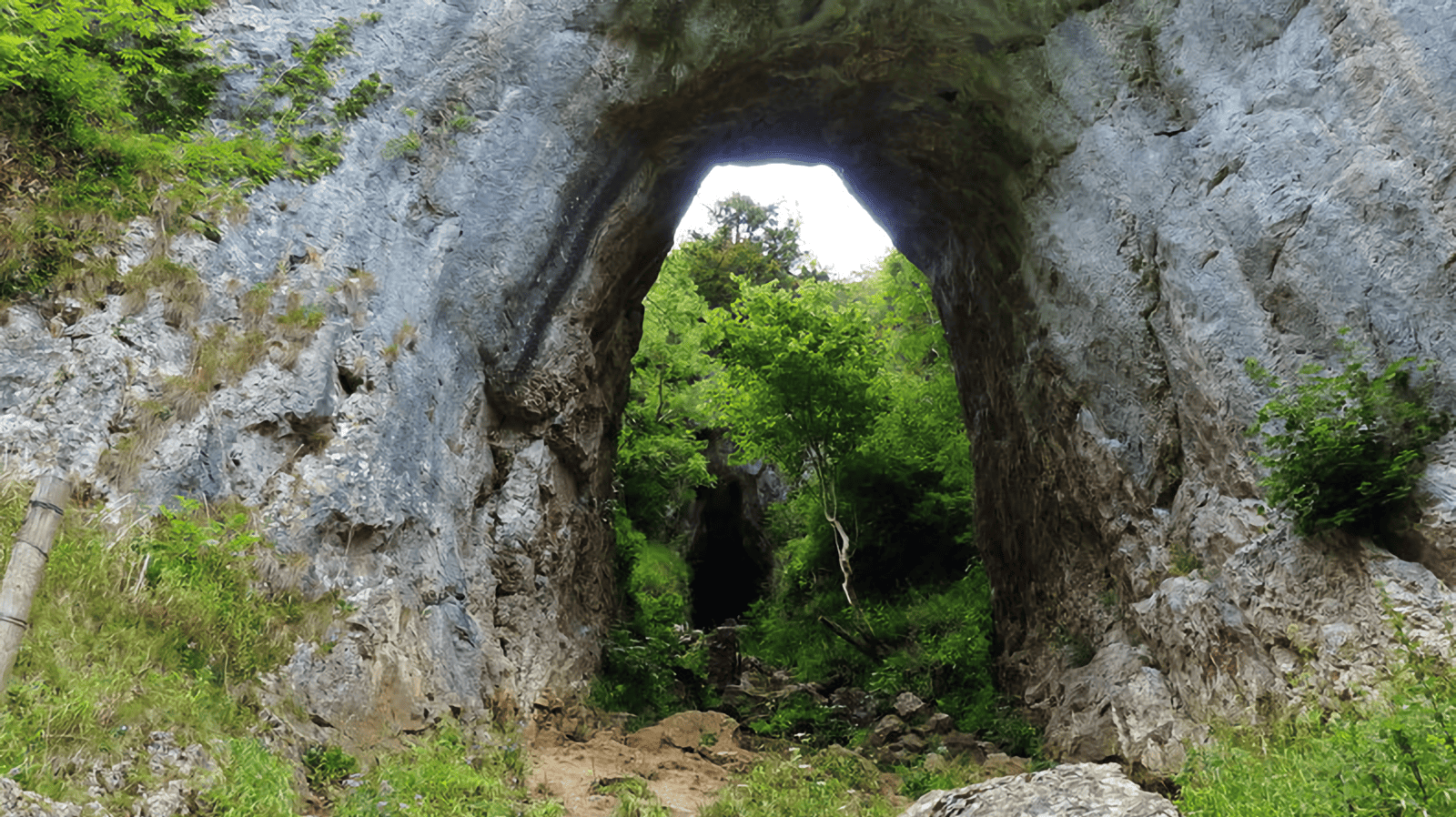
Some twenty miles south of Burbage Valley is Reynards Cave, nestled in an uphill woodland on the eastern bank of River Dove. A well-known camping spot, the cave was named after a local bandit who supposedly used it as a hideout. It’s one of many natural wonders situated along River Dove, including Dove Holes, Stepping Stones, and Ilam Rock.
To get here, you’ll want to start from the north – i.e., from the gorgeous hamlet of Milldale – and follow River Dove southwards. On your way to the cave, you’ll pass two natural wonders mentioned above: Dove Holes (a series of riverside holes in the rocks) and Ilam Rock (a 25m-high limestone rock).
A unique thing about Reynards Cave – and also what makes it an excellent bivvying destination – is the natural rock arch in front of its entrance. This spot can be your base for exploring the valley of Dovedale and the surrounding countryside. The only disadvantage to camping here is that the cave is quite well-known and fairly frequented by other campers – don’t be surprised if you find it occupied.
If you do, you’ll appreciate the fact that there are many other great wild camping spots along River Dove. Just make sure to set up camp well away from the footpath running parallel to the water. Pitching a tent in the wooded area west of the river is the best option.
Agden Rocher
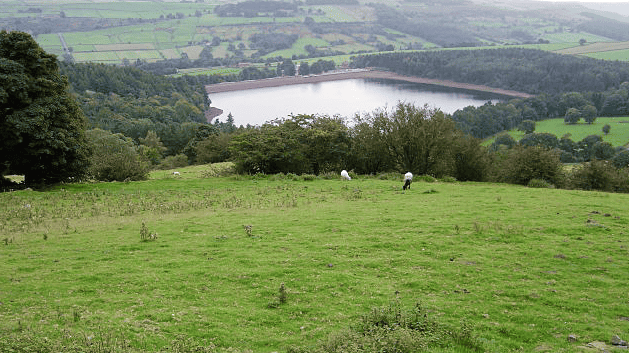
While the proximity of Agden Rocher to Sheffield offers urban convenience, those seeking a more secluded retreat might consider the untouched landscapes of Avon. Its serene riverbanks and enchanting woodlands provide a contrast to the rugged Peak District, offering wild campers a tranquil escape away from city lights. With Avon’s diverse terrain and historic charm, it’s a delightful alternative for adventurers looking to immerse themselves in nature’s embrace.
Lawrencefield Quarry
Next is Lawrencefield Quarry in Hope Valley, a cliffside artificial lake about 10 miles southwest of Sheffield. The only disadvantage of choosing this spot as your Peak District wild camping destination is that you probably won’t be alone while camping there – it is pretty popular with climbers and camping parties. Otherwise, it’s an excellent place to camp year-round.
The easiest way to get here from Sheffield is by driving southwest via A625. Once you get to Longshaw Estate, switch to A6187, take a left at Toad’s Mouth, and keep going until you reach the Surprise View Car Park, where you can leave your vehicle. From there, it takes only a few minutes to walk to Lawrencefield Quarry.
Once there, you will quickly realise why this place is so popular with all kinds of outdoor enthusiasts. While the tall cliff above the lake attracts climbers, the woodland around the lake provides plenty of space for tent-pitching. The whole place feels very idyllic and peaceful (when other campers do not populate it) while only minutes away from the road.
Fortunately, this is just one of many scenic places worth seeing in the area. While camping at Lawrencefield Quarry, you’ll be very close to Mother Cap, Owler Tor, and Millstone Edge – all three places provide superb views of the peaceful English countryside. You will also be less than two miles south of the first wild camping spot described in this article: Burbage Valley.
Hancock Wood
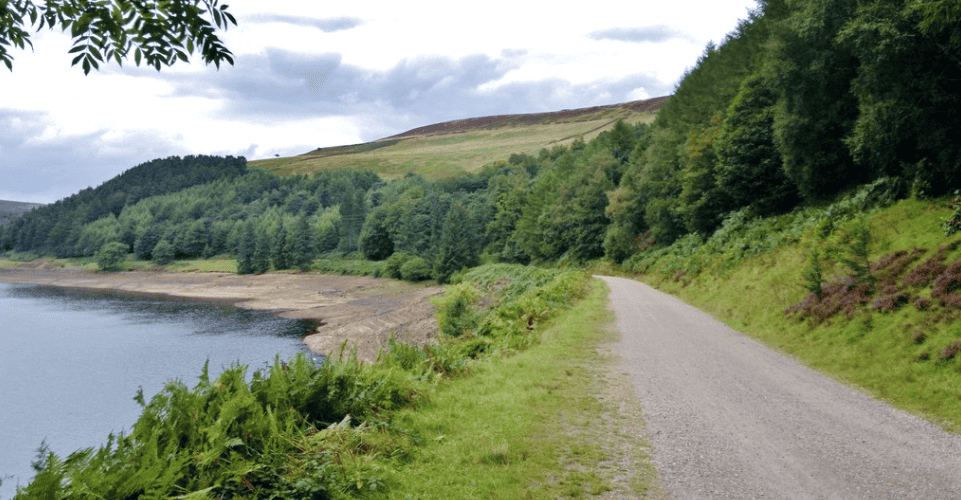
This wild camping destination is situated right next to Upper Derwent Reservoir in the Derwent Valley, about 10 miles northwest of Sheffield. The woodland in question is on the hill overlooking the reservoir and, as such, stands as an excellent option for any camper wishing to wake up to an unforgettable view.
But let’s get the bad stuff out of the way first. This is one of the busiest areas of the Peak District, with the visitor centre being close to the spot marked on the map and with many cycleways/roads/footpaths everywhere around. It’s not among the “wildest” camping spots on my list; therefore, I advise pitching your tent out of sight and using camo netting to cover it.
If you do everything correctly, you won’t be bothered by anyone while still having a fantastic view of the valley and the river, with forested hills of Derbyshire as far as the eye can see. The footpaths mentioned above can be handy: they will allow you to easily explore the area and its natural wonders from your camp.
I recommend hiking north to Howden Dam, crossing the reservoir and walking west towards Alport Castles. This is the largest landslide in the country and one that provides breathtaking views from the top. The Upper Derwent Visitor Centre – less than a mile south of your camping spot – has a friendly staff that can help you learn more about what’s worth checking out in this magnificent valley.
Bleaklow Moor
Bleaklow is a majestic high moor covered with gritstone and peat in the Peak District’s northern half. The region recently underwent a special treatment during which thousands of tonnes of heather seed, grass, fertiliser, and limestone were applied to initiate the revegetation process and stabilise the peat. Although indeed “bleak”, as its name suggests, the moor has a particular atmosphere and is one of the region’s prime wild camping destinations.
I did not mark a specific spot on the map – there’s plenty of space for pitching your tent everywhere around. Still, it would be interesting to camp somewhere east of the Boeing RB-29A Superfortress crash site, which is probably the most well-known landmark in the area. Just make sure to set up camp far away from the crash site not to be disrespectful (or spooky, for that matter).
There is a footpath crossing the moor, starting south at the Snake Pass Summit and going northwest all the way to Torside Reservoir. The path will allow you to easily explore Bleaklow from your campsite and take stunning landscape photos. If you’re brave enough, you can hike all the way northeast across the moor to the Middle Black Clough Waterfall, one of the most beautiful falls in this part of England.
Campers wishing to explore Bleaklow Moor will be less than four miles west of Glossop, a market town just outside the Peak District. If you head there after your wild camping trip, visit Old Glossop and stroll along its 12th-century stone cottages. On the other hand, the town’s High Street offers everything from award-winning craft beers, mouth-watering meat dishes, original artwork, and specialist books.
Kinder Scout
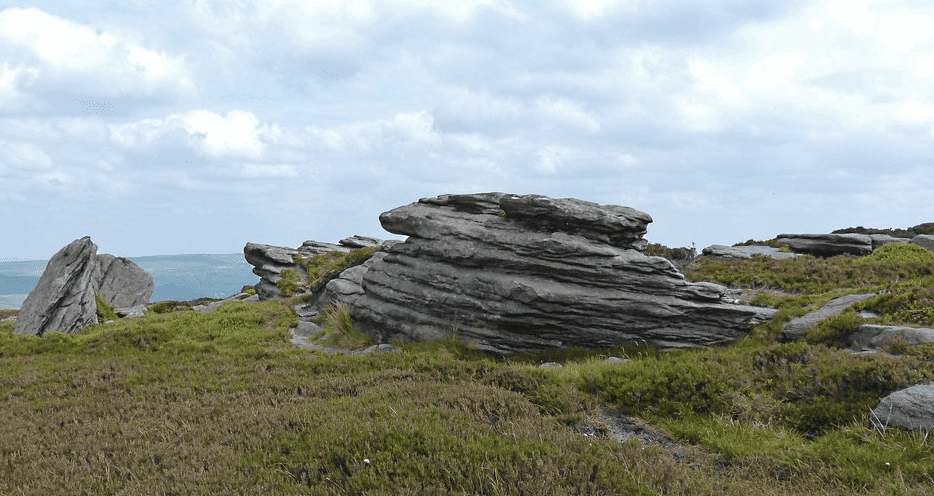
With an elevation of 636 metres, Kinder Scout is the Peak District’s highest point. Also known as the “Kinder Plateau”, it has historical significance regarding open access to moorlands in the United Kingdom. In 1932, it was the site of the “Mass Trespass”, a coordinated protest organised by walkers which led to the passage of 1949 National Parks legislation.
Kinder Scout can be approached from several different directions. One of the most popular ones is Grindsbrook Clough, a challenging scramble not recommended for campers carrying heavy backpacks. I took Jacob’s Ladder when I camped at Kinder Scout a decade ago. It takes campers over an ancient bridge and up a sloped path and is relatively easy to navigate.
There are plenty of excellent wild camping spots in the area. While you can certainly hike all the way up to the peak and set up camp there, consider staying at a lower elevation (for more shelter – the weather changes very quickly here). Another option is to pitch your tent at Woolpacks, just south of Kinder Scout, as it is full of boulders that provide ample protection from high winds.
One of the most fascinating natural wonders you can visit in the area is Mermaid’s Pool, less than a mile northwest. This small pond is a genuine hidden gem and a perfect place to spice up your wild camping adventure with some wild swimming. And, as it’s high up on the hill, it also provides campers/hikers with mesmerising views.
Bamford Edge
While not the quietest wild camping spot in the Peak District, Bamford Edge can be an excellent place to spend a night under the stars if you’re discreet. An overhang of gritstone, it offers breathtaking views of the entire Hope Valley on a clear day. It takes a 30-minute drive to get here from downtown Sheffield via A57.
The easiest way to get to Bamford Edge is from the nearby village of Bamford. You can reach the village by getting off A57 at Ladybower Reservoir – turn left after the inn, cross the bridge, and drive south for about two miles. You should be able to find a parking space on Fidlers Well, a long street crossing the village east-west.
From there, you can start your hike up to Bamford Edge. This should be a relatively short and easy walk, and you should have no trouble finding an area of level grass to pitch your tent. Wherever you choose to set up camp, you will have gorgeous views of Ladybower Reservoir and the whole Hope Valley. Remember to bring your camera!
I said this isn’t the quietest wild camping area in the district because it has become quite popular in recent years. Those wishing to camp here should remember their chances of bumping into other outdoor enthusiasts will be high. You might also be asked to move by the landowner; if that happens, do it without making a scene.
Robin Hood’s Cave
Robin Hood’s Cave, located halfway between Sheffield and Hope Valley, is one of many places in England linked to this folklore hero who robbed the rich and gave to the poor. Although an excellent wild camping destination, those wishing to camp here need to be particularly careful – the cave belongs to the North Lees Estate and is policed by wardens from time to time. You should have no trouble as long as you’re discreet and not attracting attention in any way while camping.
Since it’s situated on Stanage Edge, Robin Hood’s Cave requires a bit of climbing. However, you will first have to do a bit of trekking – there are no public transport connections to this place. The best option is to leave your car at the Burbage Bridge Car Park (about a mile from the cave) and proceed on foot.
One crucial thing to point out here is that you will first encounter a smaller cave on your way to Robin Hood’s Cave. While it provides scenic views, don’t confuse it with the one you’re headed to. The real Robin Hood’s Cave is only a few metres away – follow the ledge and find the rocks that mark its top.
Places of interest worth hiking to from this spot include Stanage Pole (to the north), Redmires Reservoir (a bit further north from Stanage Pole), and the ancient village of Hathersage (southwest). The well-equipped North Lees Campsite is very close to the cave – an excellent backup option in case of bad weather.
Grindslow Knoll
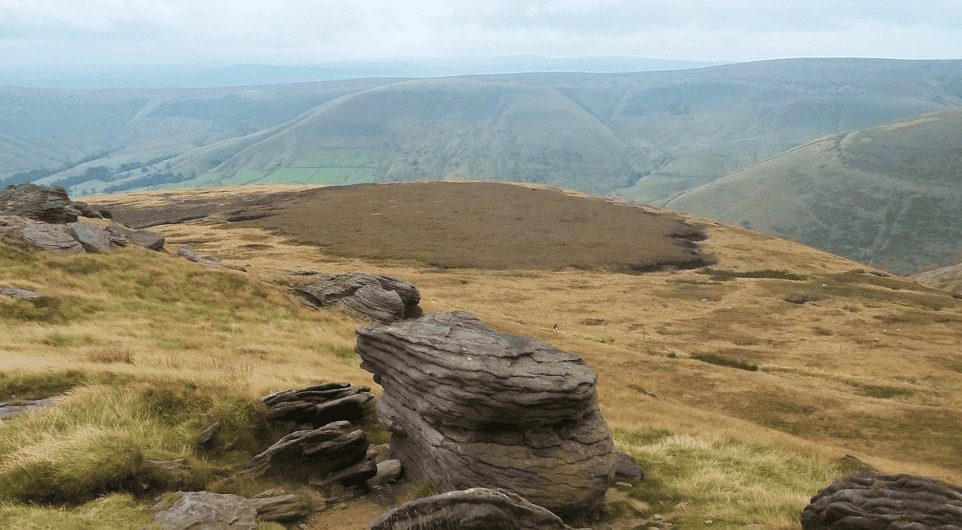
The next Peak District wild camping spot is close to Kinder Scout described above. In fact, Grindslow Knoll is connected to its more famous cousin by a high col despite appearing independent. It’s a terrific viewpoint and an excellent choice for any wild camper seeking breathtaking views of the district’s rolling hills.
Most people hiking up Grindslow Knoll to camp there start their journey in the village of Edale, which is just southeast of the hill. You can park your vehicle at Edale Car Park (£7 for 24 hours or parking) and head north towards the hill. Remember that getting to the top is relatively challenging and requires a certain level of fitness – the climb should not be attempted by those who’ve never tackled higher elevations before.
Once at the summit, you’ll want to find a suitable spot to set up camp. Here, the wind can reach the speed of around 40mph, so you’ll want to pitch your tent adjacent to one of many rocks at the hill’s top. The formidable climb to the top of Grindslow Knoll is undoubtedly worth it – you’ll have an unforgettable 360-degree view of the entire northern Peak District.
I highly recommend rewarding yourself with a pint at a lovely pub called Old Nags Head back in Edale. While in the village, check out the Church of the Holy and Undivided Trinity – it is set in an idyllic setting and is certainly worth a visit. Another option is to proceed to Kinder Scout, which is, as I’ve mentioned above, very close to Grindslow Knoll (less than 2 miles northwest).
Black Hill
The last wild camping spot on my list is in the far north of the Peak District, about four miles north of the Middle Black Clough Waterfall mentioned above. With an elevation of 582 metres, it is lower than Kinder Scout but still the highest hill in West Yorkshire. As such, it provides wild campers with magnificent views of the Dark Peak (the district’s northern half).
You’ll want to start your journey to Black Hill from Crowden – a 3.5-mile hike northwards will allow you to experience the stunning Saddleworth Moor in all its glory. Make sure to wear quality footwear: thanks to the region’s recent regeneration and restoration activity, the moorland is now a lush and wet grassy area of peat bog. The ground can get particularly boggy in rainy weather.
The Black Hill’s highest point is marked by a small, elevated mound frequented by hikers, so you’ll want to set up camp well away from it. You’ll have a constant reminder of nearby civilisation in the form of the Holme Moss Transmitter, England’s highest radio transmitter that can be seen from every corner of the moorland. Still, the area is very peaceful and full of breathtaking vistas, as mentioned above.
There are two additional summits that you can climb on your way to or from Black Hill: Laddow Rocks and Holme Moss Summit, both offering moorland views that are just as impressive. The nearby Chew Reservoir is also worth checking out, as is the Trinnacle – one of Britain’s most fascinating rock formations.
Where to Next?
Head west to Snowdonia National Park in Wales for a complete change of scenery. With its craggy mountains and pristine glacial lakes, this region has an entirely different look and feel from the Peak District while also boasting a wealth of breathtaking wild camping spots.
To learn more about those places, check out my ultimate guide to wild camping in Snowdonia.

I love hiking, backpacking, and camping. From the Camino de Santiago to the West Highland Way in Scotland or simply a great day hike on the weekend. Hiking refreshes me, my mind, and keeps my body reasonably fit. So far I have walked three Camino routes and many other long distance hikes in the UK, Canada, and around the rest of Europe. One of the best was my hike up Ben Nevis.

